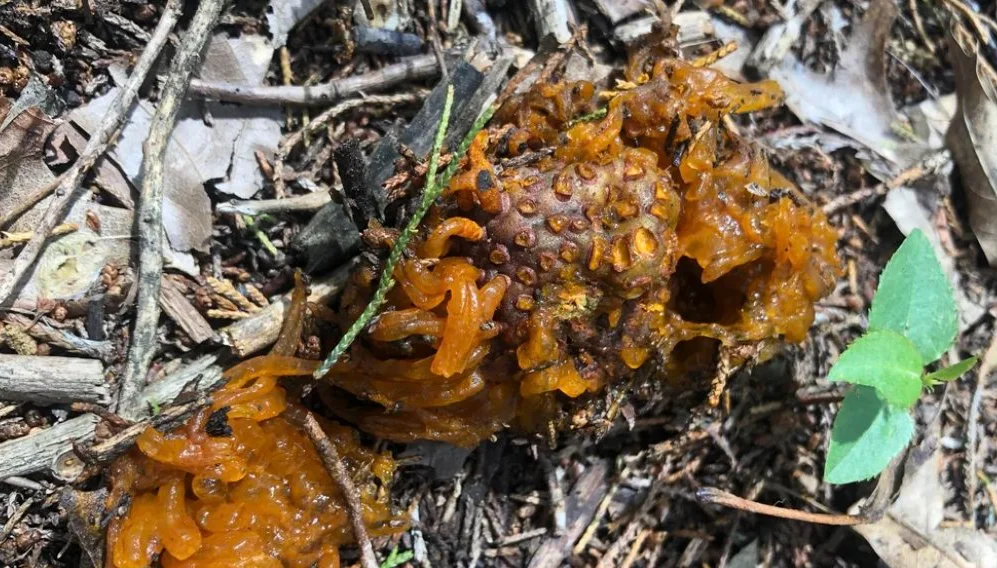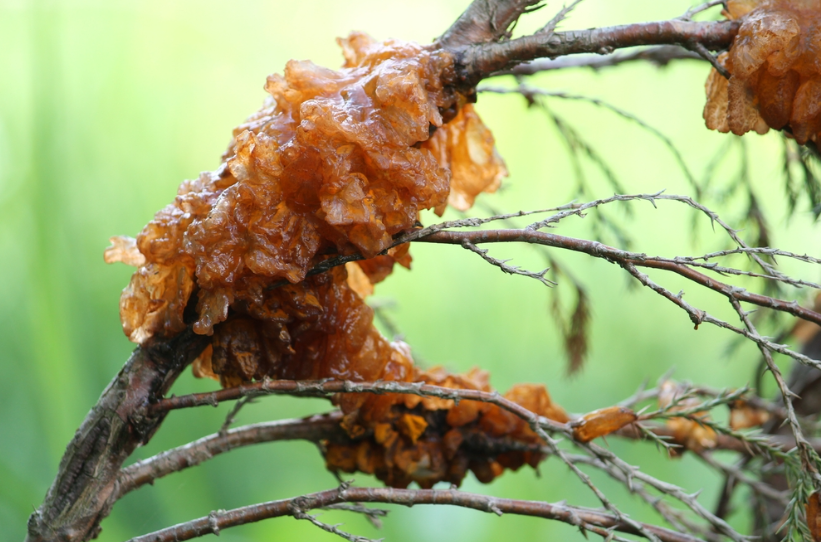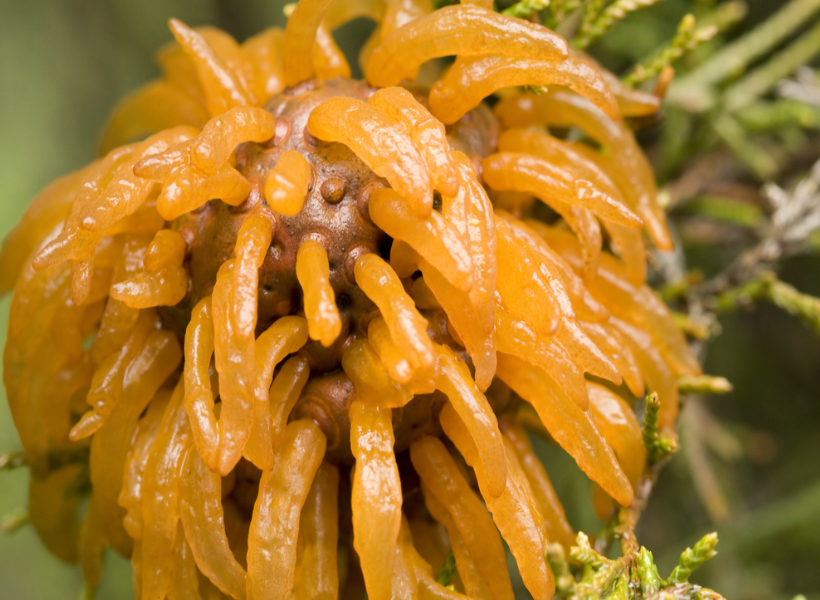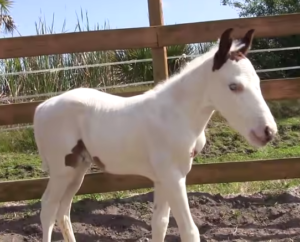
Owning a garden and caring for your plants requires an understanding of potential issues that may arise. If you come across a mysterious substance known as the “jelly nut” in your garden, here’s what you need to know.
Recently, a Redditor from Oklahoma discovered an odd sight in his garden, bright “yellow goo” on his trees and a peculiar object he described as a “gelatinous alien nut”. Unsure of what it was, he turned to the Reddit community for assistance, mentioning that the affected tree was a conifer, though he couldn’t identify it further.
Almost immediately, another user identified the problem as “cedar and apple rust”. This disease depends on two host plants to complete its life cycle, primarily affecting apple and crabapple trees.

The symptoms vary depending on the type of tree. On junipers, a brown gall forms on twigs and produces orange, gelatinous horns in the spring, particularly during wet weather. Although the twig beyond the gall may die, the damage to the juniper is minimal.
For apple and crabapple trees, yellow circular spots appear on the leaves soon after flowering. By late summer, brown clusters of cylindrical structures develop underneath the leaf spots, on twigs, or even fruit.
Galls from the infection can take several months to develop, appearing around seven months after infection begins. After 18 months, they evolve into gelatinous masses. In the spring, these galls develop depressions resembling golf balls, which give rise to telial horns that elongate and turn bright orange during rainy periods. After releasing spores, these horns collapse and dry up, although the galls can remain attached to the tree for another year.

Management of this infection can include pruning the affected areas or simply allowing it to run its course since it typically doesn’t kill trees but may cause some disfigurement. Preventive measures, such as fungicides or planting resistant apple varieties, can also help.
Overall, while cedar and apple rust isn’t a severe threat to your trees, being informed about it allows you to take the right steps if it appears in your garden. Share this information with others so they can be prepared too!
Enchanting Equine: Rare Foal’s Remarkable Facial Markings Stun Onlookers”.
When Scott and Jackie Nelson first saw Coconut the horse, they couldn’t believe she was a Melbourne, Florida native.
Over three million people have marveled at how unique she is, and that’s because they had to record her beauty at the age of two days old to show the rest of the world.
At the age of two, the couple, who run a ranch named Down Under Colour and breed horses, took her outside for the first time on camera.
According to a YouTube description, Coconut is also referred to as a War Horse and has incredibly uncommon markings. The chief or the medicine man, a traditional and spiritual leader, would ride this horse, which was revered in Native American culture.

They must have one blue eye with liner surrounding it and a shield on their chest in order to qualify as a War Horse.
In Indian mythology, this eye is referred to as a Sky Eye. This one blue sky eye will convey the spirits of the Chief and Medicine Man to their gods if they perish in combat. That explains why she is so unique. Watch Coconut in the video below.
If the beauty of this unique foal also struck you, please share this tale.



Leave a Reply